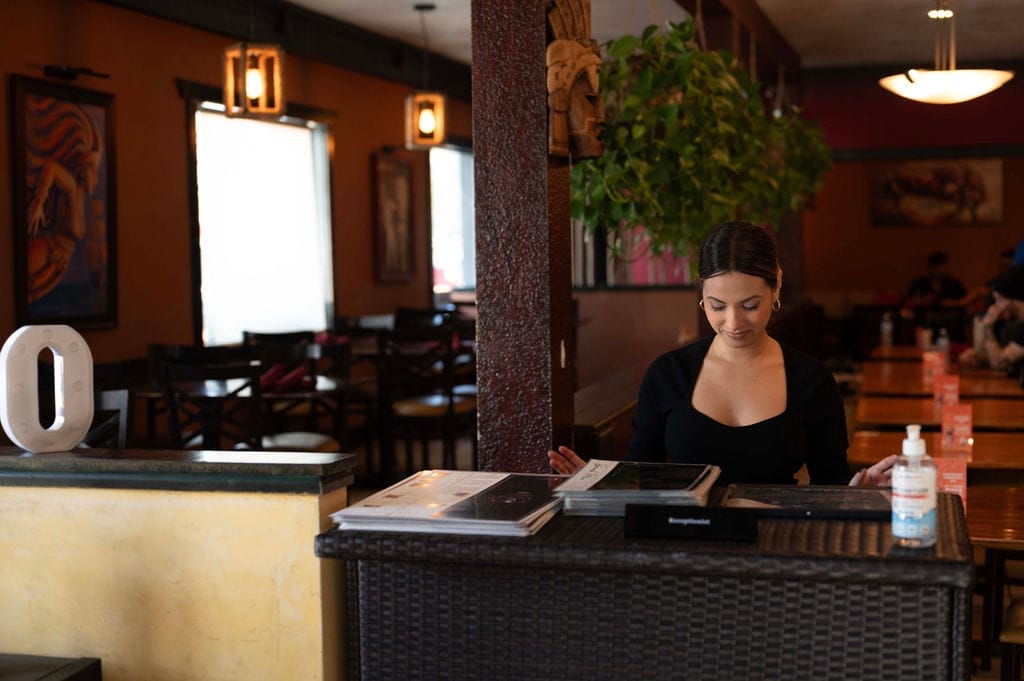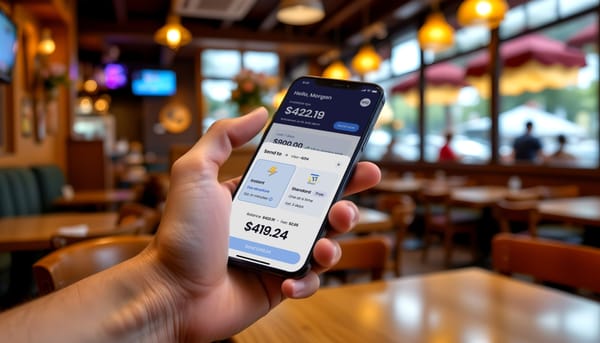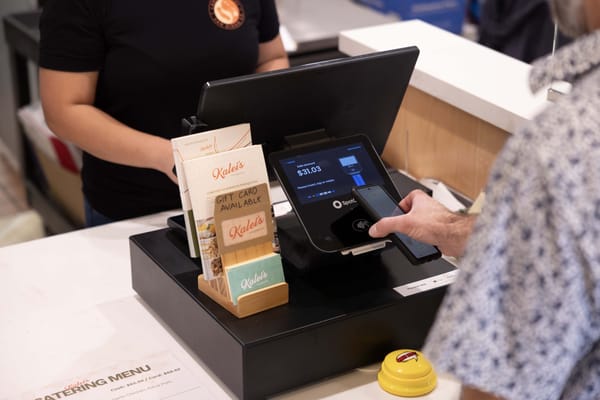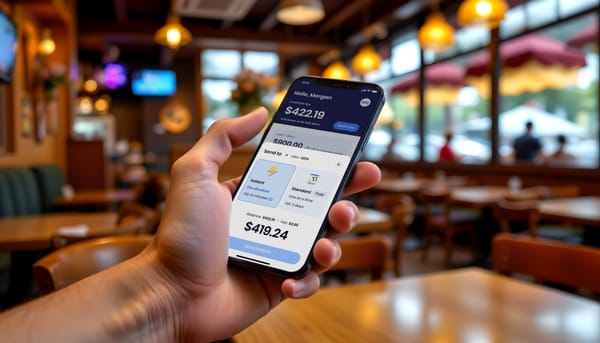The restaurant host or hostess is the first person you see when you walk in and the last person to say goodbye as you leave. But they're more than just a pretty face. The host has a unique set of duties and responsibilities that ensure the restaurant's front-of-house runs smoothly. The job description includes table management, managing reservations, and ensuring a stellar guest experience. Depending on the concept, the host or hostess might be assisting other restaurant staff or handling to-go orders. Excellent customer service skills are always a must, and a warm smile never hurts.
What are the host or hostess' responsibilities?
Host or hostess responsibilities depend greatly on the restaurant concept. At a fine dining restaurant, the host or hostess might be more focused on making guests feel welcomed than overseeing table turnover. A host at a casual family restaurant could be more involved in the dining room, ensuring guests have full water glasses and pitching in if a server needs a food runner.
While host or hostess duties fluctuate depending on available tables, reservations, and restaurant staff capacity, here are some responsibilities you're likely to find on a host or hostess job description template.
1. Table management
Contrary to what many restaurant guests may think, table management isn't just seating guests at random empty tables. Restaurant hosts use seating charts, divided into server sections, to seat guests. This ensures full tables are balanced throughout the restaurant rather than clustered in one section. A good host will distribute large parties equitably since they're more profitable for servers (though they're also more work).
A seating chart not only makes the servers' lives easier but also improves the guest experience. Servers don't get overwhelmed, have more time to interact directly with guests and provide the best possible dining experience.
2. Managing reservations
The host or hostess handles all things reservations, whether manually taking reservations or using an online reservation system that automatically receives and confirms reservations. The restaurant hostess also typically handles phone calls, often managing reservations over the phone or answering guest questions.
3. Overseeing the waitlist
For busy restaurants, expert management of the waitlist is key. Many restaurant hostesses use a waitlist app that automatically texts estimated wait times and lets guests know when their tables are ready. Technology makes the waitlisting process more efficient, but the host or hostess does the essential job, too. Accurate wait times are one thing, but knowing how to deal with impatient (and hungry) guests is a human's job.
The host or hostess explains the waitlisting process, gathers the guest's phone number and relevant information, and informs them of the wait time. They also ensure the waiting area is clean and doesn't get overcrowded, which can be both a safety risk and a deterrent for potential customers.

4. Greeting guests
A restaurant hostess job description wouldn't be complete without "greet guests" as an essential task. The host or hostess is the face of the restaurant for new guests and walk-ins. By welcoming guests with a smile and friendly demeanor, the restaurant hostess gives the guests a great first impression before they even reach the dining area.
Each hostess has her own style when greeting customers. A good hostess knows the names and faces of regular customers, expertly communicates the status of the waiting list, and is able to anticipate special requests, like coloring books or high chairs for children.
5. Supporting other staff members
As the first wave of guests walks through the door, the hostess's job is exclusively greeting guests and seating guests. Later in the night, as guest traffic wanes, the restaurant hostess may be able to leave her stand and support the wait staff. If the restaurant is slammed, it could mean dropping drink orders or helping out with their sidework and other tasks.
6. Handling take-out orders
If the restaurant doesn't have a designated walk-up window for takeout, it might fall on the host or hostess to handle take-out orders from the host stand. This means greeting take-out customers, providing accurate wait times if their order is still being prepared, and running the order from the kitchen when it's ready. It could also mean handling phone calls and other guest inquiries about the takeout menu.
Post-pandemic, take-out and delivery through online ordering has only increased in popularity. If a restaurant operates an extensive take-out operation, those responsibilities would likely fall on a designated staff member rather than the hostess.
7. Bussing tables
When it’s all hands on deck, hosts might be expected to double as bussers and clear tables when guests are finished dining. Bussing tables as quickly as possible is essential for faster table turns. Every minute those dirty dishes sit on the table is another minute the restaurant could be making money.
What makes a good host?
As with many jobs that require stellar customer service skills, a great hostess is easy to spot and hard to define. Many hosts and hostesses are new to the hospitality industry, so a willingness to learn the ins and outs of restaurant operations is a must. Here are some other skills you might see listed on a hostess job listing.
1. Provide excellent customer service
A hostess seats guests. In that short interaction, there is an opportunity for a meaningful impact on the guest's dining experience. The hostess is the first person the guest interacts with, so it's their duty to provide a warm welcome, ask if they've been to the restaurant before, and make pleasant conversation as they guide the guests to their table.
Customer service is more than saying hello. It also means being aware of customer needs and accommodating customers to the best of the restaurant's ability. If a guest has a disability or special preference that means they can't be seated at high tops or need a table that can comfortably fit a wheelchair, it's the host's job to make it work.
2. Understand restaurant operations
It doesn't just apply to a restaurant hostess job. Everyone gets better at their job when they see the bigger picture and understand how their role fits with others in the organization. A great restaurant hostess gets to know the wait staff and understands how the hostess and servers can work together to create a better dining experience for the guests. The same goes with the kitchen and bar staff.
Better understanding creates a positive work environment. It'll also help a new restaurant hostess better estimate wait times, handle customer inquiries, and climb the ranks quickly if they want to make the switch to serving at some point.
3. Multi-task, multi-task, multi-task
If you don't like juggling multiple tasks, you might need to rethink restaurant work. When there are customers in the waiting areas, drinks gathering condensation at the bar, and tickets piling up in the kitchen, it's time to multi-task.
For hosts and hostesses, it may mean putting aside their primary duties and responsibilities to help out the servers, especially if the wait list is under control. Of course, servers receive tips, while the host or hostess usually gets paid per hour. Some restaurants have tip-share agreements to ensure the host or hostess gets fairly compensated for their share of the work.
If the restaurant is slammed, the host or hostess shouldn't look down their nose at washing the dishes just because it isn't listed in the duties and responsibilities in their job description. Creating an enjoyable dining experience is a team effort.
4. Thoughtful communication
Some conversations with customers will be more difficult than others. When a guest comes in with a non-service animal or when a party demands to be sat even though half the guests are still on their way. There will be guests who don't like the table they've been assigned and guests who don't understand that those empty tables are fully booked.
These conversations require a certain tact and politeness that's intuitive to the best hosts and hostesses. Part of it is selling the experience by offering a drink at the bar to guests waiting for long periods, emphasizing the benefits of a table, whether it's tucked away or in the middle of the action, and communicating that sometimes waiting lists and busy dining rooms are part of the fun of restaurants.
Be the first point of hospitality
If you're looking for your first host or hostess job, scope out online restaurant job boards or walk by nearby restaurants to look for that "hostess wanted" sign. You might also want to check out physical job boards at a local coffee shop or community center. The hostess job description is usually pretty standard across concepts, with fine dining being the exception.
Qualified candidates rarely need a high school diploma—hostessing is a great summer job. The most important qualities for hostesses are an aptitude for waiting lists and a passion for customers. It's not rocket science, but it's a lot more than showing guests where they'll sit.














